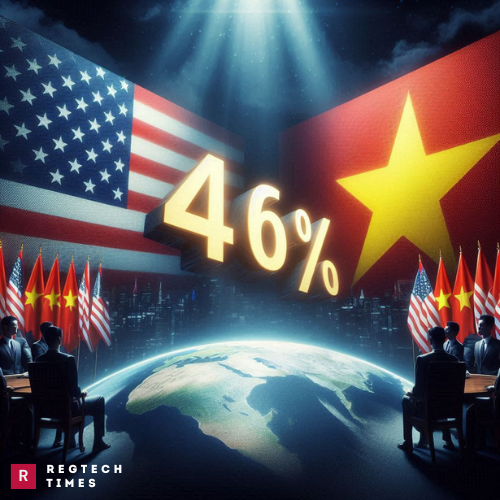Vietnam has started important trade talks with the United States, as reported by Vietnam’s state-run television on Wednesday. This comes at a critical time, with the U.S. considering a huge 46% tariff on goods coming from Vietnam. A tariff is like a tax that countries put on goods brought in from other countries. If these taxes are put into place, they could make it much more expensive to sell Vietnamese goods in the U.S., which would be a big problem for Vietnam.
The trade talks began with a phone call between Vietnam’s trade minister and U.S. Trade Representative Jamieson Greer. The Vietnamese side said they are ready to work on the problems between the two countries as long as the solutions help both sides. Meanwhile, the U.S. side has expressed interest in creating a steady and long-lasting trade relationship.
The 46% tariff is not being applied right away. The United States has decided to delay it until July, giving both countries time to talk and maybe solve the issues. But if the talks do not go well, the tariff could still be imposed, which would make it harder for Vietnam to sell its products in the U.S., its biggest export market.
Tense Crossroads: Vietnam Vows Crackdown After U.S. Finds China Label Trickery
Vietnam’s Economy Depends Heavily on Trade with the U.S.
Vietnam’s economy has grown fast in recent years, and a big part of that growth comes from selling goods to other countries. The United States is the top buyer of Vietnamese products. Things like clothes, shoes, electronics, and furniture are made in Vietnam and sent to the U.S. But if these goods become more expensive because of the tariffs, fewer people in the U.S. might want to buy them.
Vietnam is not just making products for itself. Numerous major global companies operate factories in Vietnam, from where they export their products to the United States. If the new tariffs are enforced, these companies might lose money or even move their factories to other countries. This could hurt Vietnam’s economy and affect the jobs of many people.
In fact, Vietnam had one of the largest trade surpluses with the U.S. last year. That surplus was worth around $123.5 billion. Some people in the U.S. believe that this big gap is unfair, and that’s part of the reason the tariff is being considered.
Nike and Adidas Struggle as US Tariffs Target Vietnam Production
Vietnam Responds to U.S. Concerns
Vietnam is taking the situation seriously. The country’s leader has told government officials to focus on solving the problems that worry the U.S. These problems include stopping trade fraud and making sure that Vietnamese products are real and not fake or copied from others. Trade fraud is when someone lies about where a product comes from or what it is made of, in order to avoid taxes or get unfair advantages.
Vietnam’s government has also said it will take steps to stop people from using Vietnam as a shortcut to send products to the U.S. from other countries. Sometimes, companies ship goods to Vietnam just to change the labels and pretend they are Vietnamese products. This trick is used to avoid tariffs or rules meant for other countries. The U.S. has said it wants this kind of activity to stop, and Vietnam has promised to take action.
Although no final decisions have been made yet, the talks show that both sides are willing to discuss the issues. The outcome will depend on whether both countries can find a way to agree that protects their own interests while keeping the trade relationship strong.
At the moment, the focus is on the weeks ahead. Since the tariff delay is only in place until July, both Vietnam and the U.S. are under pressure to reach an agreement before the deadline approaches.


